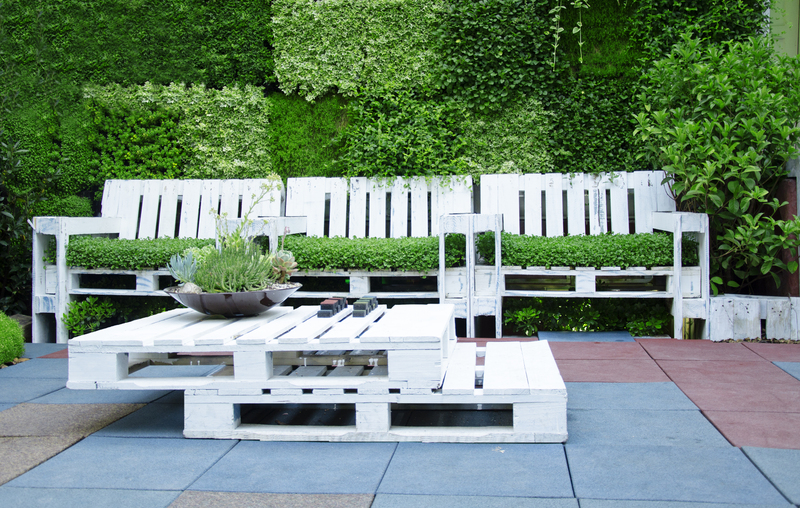With environmental conservation becoming a global priority, the practice of upcycling wood waste has emerged as not only a sustainable solution but also an exciting creative hobby. Whether it's transforming discarded pallets into stunning furniture pieces or crafting decorative items from scrap wood, upcycling breathes new life into traditionally overlooked materials.
What is Wood Waste?
The term "wood waste" generally refers to useless by-products from wood processing. This can include sawdust, chips, shavings, and discarded timber or lumber. With the increasing demand for wood products, the generation of wood waste is inevitable, making its responsible management crucial.

Sources of Wood Waste
- Lumber Mills: The primary source of wood waste, from sawdust to offcuts.
- Construction Sites: Often generate significant waste in the form of offcuts and broken timber.
- Furniture Manufacturers: Produce leftovers during the cutting and shaping processes.
- Demolition Projects: Old structures may yield reusable wood waste ready for upcycling.
The Importance of Upcycling Wood Waste
Upcycling wood waste plays a pivotal role in reducing environmental impact. Here's why it's crucial:
Sustainability
By giving a second life to discarded wood, upcycling minimizes the need for new resources, conserving forests and reducing waste in landfills. This sustainable practice results in a significant reduction in carbon footprint.
Economic Benefits
Creatively turning what some consider "trash" into valuable products can create new revenue streams. Upcycled goods often possess a unique character that commands a higher market price.
Artistic Expression
The process of upcycling allows for unbounded creativity. Artisans, hobbyists, and passionate individuals can express themselves through the unique characteristics of each piece of wood, creating one-of-a-kind items that captivate and inspire.
Getting Started with Upcycling Wood Waste
If you're enthusiastic about embarking on your wood upcycling journey, here are a few essential steps to consider:
Gathering Materials
- Source wood waste from construction sites or local carpenters. Always ask for permission!
- Visit salvage yards or recycling centers that specialize in reclaimed wood.
- Keep an eye out for discarded wooden furniture or pallets in your neighborhood.
Tools You'll Need
- Circular saw or hand saw
- Sandpaper or electric sander
- Hammer and nails
- Wood glue and clamps
- Paint or wood stain for finishing touches
Choosing Your Project
Your project choice will dictate the tools and techniques you'll employ. Consider starting with simpler projects like:
- Picture frames: Easy to make and a great way to learn basic woodworking techniques.
- Shelves: Utilize reclaimed wood to create rustic wall-mounted shelves.
- Planters: Perfect for utilizing small off-cuts and scraps, transforming them into decorative garden features.
Advanced Upcycling Projects
Once you're comfortable with basic projects, consider tackling some advanced upcycling challenges:
Furniture Creation
Turn larger pieces of reclaimed wood into furniture. Popular items to create include tables, chairs, and bed frames. Each will require precise measurements and more sophisticated joinery techniques.
Artistic Sculptures
Experiment with creating intricate sculptures or wall art. The natural textures and grains can provide visual interest, making each piece truly unique.
Combining Materials
Consider incorporating other recycled materials like metal or glass to add contrast and additional functionality to your pieces. Mixed media projects can offer unparalleled aesthetic appeal.
Finishing Touches
Finishing your upcycling project involves enhancing both durability and aesthetics. Here are a few methods:
- Sanding: Smooth out rough edges and surfaces.
- Staining: Apply wood stain to enhance the natural grain and color.
- Painting: Use paint for bold color statements or design details.
- Sealing: Protect your creations from moisture with clear lacquer or varnish.

Inspirational Upcycling Ideas
Pallet Projects
Pallets offer versatility due to their uniform structure and sturdiness. Consider using them for larger projects like coffee tables, garden furniture, or vertical herb gardens.
Barnwood Beauties
Reclaimed barn wood carries history and character. Use it to add charm to an interior space with wall claddings, door frames, or architectural features.
Creative Cutting Boards
Small-off cut pieces not fit for large structures can make excellent cutting boards, combining functionality with the beauty of varied wood grains.
Conclusion: Transforming Waste Into Wonders
Upcycling wood waste is more than an environmental endeavor; it's an invitation to engage with creativity and resourcefulness. Each project reduces waste, preserves natural resources, and brings individuals closer to sustainable living. Whether you are a seasoned craftsman or a novice ready to explore, the art of upcycling holds limitless possibilities. Embrace the challenge, and let's continue to transform the narrative from waste to wonders!